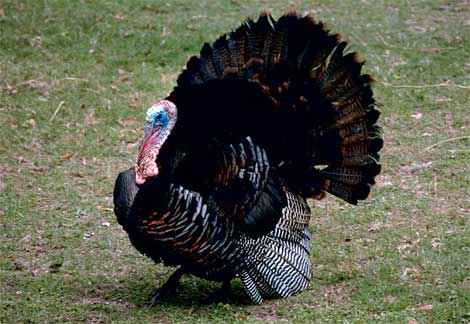Forest Wildlife Management and Conservation
| Author: | LeRoy Humphries |
| Level: | High School |
| Content Area: | Biology, Environmental Science |
| Author: | LeRoy Humphries |
| Level: | High School |
| Content Area: | Biology, Environmental Science |
A forest manager must be concerned not just with the concerns of the landowner, but also the wildlife in the area. Remember, the animals living in an area are stakeholders in the forest ecosystem also! Different animals need different types of habitat. Some animals love the open areas, others need deep woods. Some do very well along the fringes of the forest. A forest manager needs to consider the effects on the wildlife in an area before commencing timbering, during timber harvesting operations, and afterwards in determining which method to use for replanting. This is especially critical when dealing with endangered species.
An example of this is the management of southern pine forests for the red-cockaded woodpecker. This small bird requires old-growth pine forests for its survival. It nests in open stands of pines containing trees 60 or more years old. When timbering an area containing trees such as this, foresters must look for the nest cavities of these birds and avoid disturbing them. Red-cockaded woodpeckers need either pine or mixed pine/hardwood forests >30 years old for foraging. These birds tend to avoid densely packed forested areas, especially those with a high density of hardwoods. Think of all the factors here that a forest manager must consider in areas that provide habitat for these birds. Can the trees be harvested during the nesting season or will that cause too much disruption for the birds? How many nests are in the area? How many trees must be left for nesting habitat? Can you think of any other questions? Write down a few that you think would be important to managing a forest in relation to this bird.
Other concerns revolve around the concepts of 1habitat fragmentation and the 2edge effect. Habitat fragmentation means that existing habitat is reduced into ever smaller patches separated by a different type of habitat. This means that species living there are forced into smaller and smaller areas in which they can live. Associated with this is the concept of the edge effect. Some species require deep woods habitat to go about their lives. When usable habitat patches become smaller and smaller, the organisms that need deep woods habitat are exposed to fringes where they are more susceptible to predation, competition, and disease. Some organisms, called "habitat specialists," cannot tolerate this and may become locally extinct. Other organisms are considered to be "habitat generalists" and can live just about anywhere. Deer and raccoons are examples of this, as they are often quite at home in suburban areas where they eat from gardens, hedges, and trash cans.
 Now, go to the North Carolina Gap Analysis Project homepage. Scroll down to the middle of the page to the heading "Terrestrial Vertebrates" and click on the "breeding birds" link. Scroll down to the link for the wild turkey in the right column (it is under the Galliformes category). Click the page link (not the .zip file!). The link takes you to a page that lists the habitat requirements for this bird and predicts where it will be found in North Carolina. Reading through this page you will see that wild turkeys like mature forests with lots of oaks. Additionally, they tend to do well along forest edges and in areas with open spaces. A forest manager would use this information to design a management strategy for this bird in an area to be timbered.
Now, go to the North Carolina Gap Analysis Project homepage. Scroll down to the middle of the page to the heading "Terrestrial Vertebrates" and click on the "breeding birds" link. Scroll down to the link for the wild turkey in the right column (it is under the Galliformes category). Click the page link (not the .zip file!). The link takes you to a page that lists the habitat requirements for this bird and predicts where it will be found in North Carolina. Reading through this page you will see that wild turkeys like mature forests with lots of oaks. Additionally, they tend to do well along forest edges and in areas with open spaces. A forest manager would use this information to design a management strategy for this bird in an area to be timbered.
Now it is your turn. Go back to the breeding birds page and scroll down until you see the tab for the wood thrush and click on it like you did for the wild turkey. Answer the following questions, then print them and give them to your teacher for grading and credit. Repeat this activity for a mammal of your choice. Make certain you write down what mammal you are using!
Toggle open/close quiz group1A process of environmental change important in evolution and conservation biology. As the name implies, it describes the emergence of discontinuities (fragmentation) in an organism\'s preferred environment (habitat). Habitat fragmentation can be caused by geological processes that slowly alter the layout of the physical environment or by human activity such as land conversion, which can alter the environment on a much faster time scale. The former is suspected of being one of the major causes of speciation. The latter is causative in extinctions of many species.
2An edge effect in biology is the effect of the juxtaposition of contrasting environments on an ecosystem. This term is commonly used in conjunction with the boundary between natural habitats, especially forests, and disturbed or developed land. Edge effects are especially pronounced in small habitat fragments where they may extend throughout the patch.